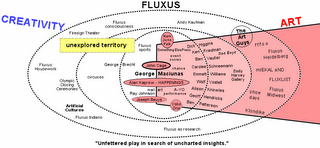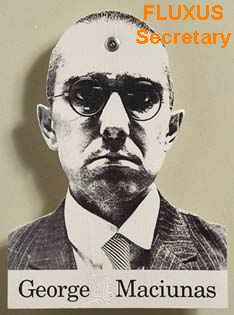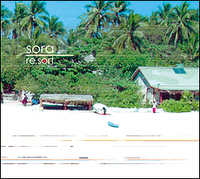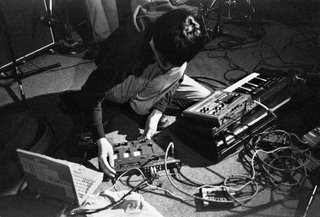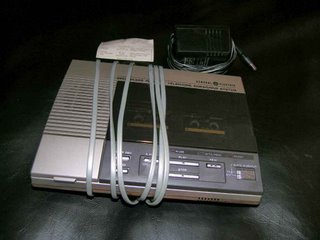
Richard Devine é um dos meus produtores de favoritos do que eu chamo de "Extreme Experimental IDM" de todos os tempos. Sua fusão entre gears, softwares, maquinárias, sci-fi e experimentaçoes densas como por exemplo noises de correntes eletricas e tranformadores de energia provocam uma atmosfera sombria e caótica em uma sincronia morbida e fantástica. E as vezes bela... mas só as vezes...
Natural de Atlanta, tive oportunidade de conhecer essa figura local, em uma das minhas aventuras idmilisticas naquela cidade. Ver ele in action foi realmente awesome. Ta ae uma entrevista com ele para o Modsquare de Chicago.
What would you say makes Cautella stand apart from your previous albums? For example, does it show any of the ways you feel you have grown as a sound designer, beat programmer or composer?
Richard: I would say this is more of a transitioning album for me. I am in the middle of developing new techniques in terms of sound design and composition. I spent a great deal of time working with new sound design applications for this release, and acquired a great deal of new kit as well, so I was still experimenting with new things and processes while creating this release. I think Cautella is more of an immediate release for me. It has more aggressive rhythmic tracks and textures. I really tried to make this release an interesting listening experience from beginning to end.
How did this album come to be released on Sublight Records?
Richard: I have been a long time friend with Aaron Funk (Venetian Snares), and Aaron asked me if I was interested in doing something with his friend’s label back in Winnipeg. I thought it would be great to release an album on this label that was relatively new, and to release something this year that wouldn’t interfere with my Ghostly and Schematic Records releases I have planned for next year. So it was a perfect place and time to do this project, and Sublight fit the bill. I really like what Aaron puts out. It’s proven to be a consistent label.
Cautella's cover art is wonderful; it looks like a crossbreed of the work of Alex Rutterford and Michael England. How much control do you exert over the art direction? Do you prefer not to make your own album art? Also, how do you feel the look of the art relates to the images and mood you wanted to evoke with the music on this album?
Richard: I would have to thank my close friends Noah and Brian at KeepAdding, in Santa Fe, New Mexico for that one. They are incredible digital media artists who I became friends with a few years ago. I basically gave them the album and told them a basic feel and mood that I was aiming for in terms of the artistic presentation for this release. They sent me some sketches and we went back and forth exchanging ideas, and came up with the Cautella album cover. I was really impressed with the way it turned out. It is by far one of my favorite releases in terms of music and artistic presentation. In terms of how the art relates to the music: I basically just sent them my tracks and Noah and Brian listened and came up with some images that were directly evoked by the tracks. They sketched out some intricate alien insect models, and some very strange demonic alien skulls morphed in Photoshop. This is what they saw in their heads while listening to the music. I thought it was perfect, as these are the types of images I want the listener to see and experience.
You have mentioned you'd like to do sound work on science-fiction films. Did you have this approach in mind when making the more ambient soundscapes on Cautella, particularly the opening track, "Helix Stair Helve"? On a more conceptual level, how does the idea of film (and music, too) with its linear progression in time hang together with the description sometimes applied to your music as being 'sound sculpture,' which could suggest a static object that is capable of being experienced from many different points of view?
Richard: Yes, I have been getting more into sound design for film and gaming companies, lately. It's really interesting to see how my sounds go up against picture and moving images, which totally changes the context and effectiveness of the sounds I create. I have always strived to create soundscapes that can basically create pictures for you in the mind, without the aid of any sort of visuals. I would invite the listener to open their brain up and experience things and places they have never seen before. It is essentially what I try to do with every piece I do. Create these surreal alien environments where you are traveling into some horrifying high-tech world. The music can be experienced in a static environment and sometimes this might be even better than in an environment where you might encounter distractions. In this case the listener can completely concentrate and process all the information.
"Orr Unfolding" is quite a haunting ambient piece. Are the unusual chords in this track a result of any special harmonic device such as microtonal scales?
Richard: This track is funny because I created it using only one piece of equipment. No computer processing or plug-ins. It was created entirely on a Nord G2 Modular synthesizer using Comb delay modules, in a sequence of detuned layers with feedback, in conjunction with String Modelers with open and ever changing envelope times. It was just a patch I made for Clavia, which I then later turned into a full-blown composition. I completely designed the patch to work as an a-tonal piece, meaning there is no tonality to the sounds. Just freeform scaling and pitching. Quite haunting, actually.
You put a lot of work into designing and manipulating your own sounds, and some of the more fascinating details of this effort might not come across immediately to those unfamiliar with your music and the more technical and academic means you sometimes employ. With that in mind, would you care to pick a few sounds or moments from the album and say a little about what processes contributed to the final result?
Richard: Yeah, it’s interesting, as I used so many sound bytes from numerous places, mostly processed sounds from external sources in my surrounding environment. Whether it is from the Kyma System or acoustic process material, I always try to make sounds that have a particular quality to them, in which they all have character and could easily stand on their own. I used a variety of different synthesizers like the Hartmann Neuron and the Roland V-synth, too, for strange ghostly smeared textures and granulated madness. Of course there was a great deal of computer processing done on this record, which accounts for at least 80 percent of the sound and processed material. It was what I considered to be a very synthetic sounding release, focusing more on detailed synthesis and found sound manipulation. There were even some parts where I used intense breathing of animals as sound transitions into the next parts. I really tried to push and change my traditional methods of composition on this release.
Any news about future projects, collaborations, DVD audio or doing sound for films?
Richard: Well, I have a limited picture disc coming out on Hymen and Sublight records which is almost already sold out. The release date is in September. I have also completed remixes for Glen Velez, Otto Von Schirach, Sector-9, Kill Memory Crash and Funkstörung. I am also working with Telefon Tel Aviv on my next record for Ghostly International. I plan to work again with Otto for a completely mad science musical record slated for next year. And I am also finishing the last edits for Mike Patton’s album Peeping Tom, which has turned out quite interesting. We have collaborated for this project on his label Ipecac. I also plan to release the DVD late next year on Schematic. Look out for this; it will be the next horrifying glimpse into 5.1* hell!
As for the Film and TV industry, I have been quite busy working constantly on new TV spots for Nike, Scion, Dodge, Xbox, Sony and many others. It’s an endless cycle of sound creation.
The limited-edition Sigstop picture disc will be released September 10th, 2005 on Sublight Records.
* Refers to 5.1 Dolby Surround Sound. See http://www.tomshardware.com/consumer/20041217/ for further explanation. - Ed.
www.richard-devine.com
www.sublightrecords.com
www.keepadding.com
Copyright © 2005 Modsquare.


